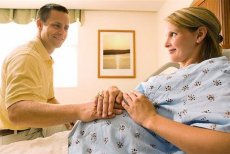New publications
Giving birth at home is not as dangerous as previously thought
Last reviewed: 01.07.2025

All iLive content is medically reviewed or fact checked to ensure as much factual accuracy as possible.
We have strict sourcing guidelines and only link to reputable media sites, academic research institutions and, whenever possible, medically peer reviewed studies. Note that the numbers in parentheses ([1], [2], etc.) are clickable links to these studies.
If you feel that any of our content is inaccurate, out-of-date, or otherwise questionable, please select it and press Ctrl + Enter.

Most modern women prefer to give birth in hospitals and do not even think about giving birth at home. Of course, you will say, because maternity hospitals provide all the conditions for this: qualified obstetricians-gynecologists, modern equipment and the necessary medications.
But the Cochrane Collaboration has produced a review that suggests home births can be safe too, if they are well planned and prepared for.
"Cochrane Reviews" is the general name for all the studies prepared by this organization. The latest one is devoted to home birth. The study involved employees from the University of Copenhagen, as well as obstetricians and gynecologists.
Despite the prevailing opinion of both specialists and pregnant women themselves that safe births can only take place within the walls of a hospital, the authors of the review support home births. In their opinion, giving birth at home is no more dangerous than in special institutions, if this process takes place under the supervision of a qualified doctor or obstetrician.
An example is several regions of Denmark, where home births are completely normal and even commonplace.
Scientists Jett Aro Klause and Ole Olsen, who participated in the preparation of this material, say that according to their data, the number of cases requiring surgical intervention - caesarean section - is 60% lower in the case of home births compared to births in hospitals.
In addition, the incidence of postpartum complications, such as perineal tears or bleeding, is 30% lower.
"If home births are to become common, and if the experience of home births is safe and successful, it should become an integral part of the health care system," says Ole Olsen. "In some Danish regions, the system for providing care to women who do not want to be served in hospitals is very well organized. Unfortunately, this is not the norm in all countries."
Of course, every woman has the right to decide where and how she wants to give birth, but the experience of Danish doctors can hardly be transferred to the post-Soviet space.
